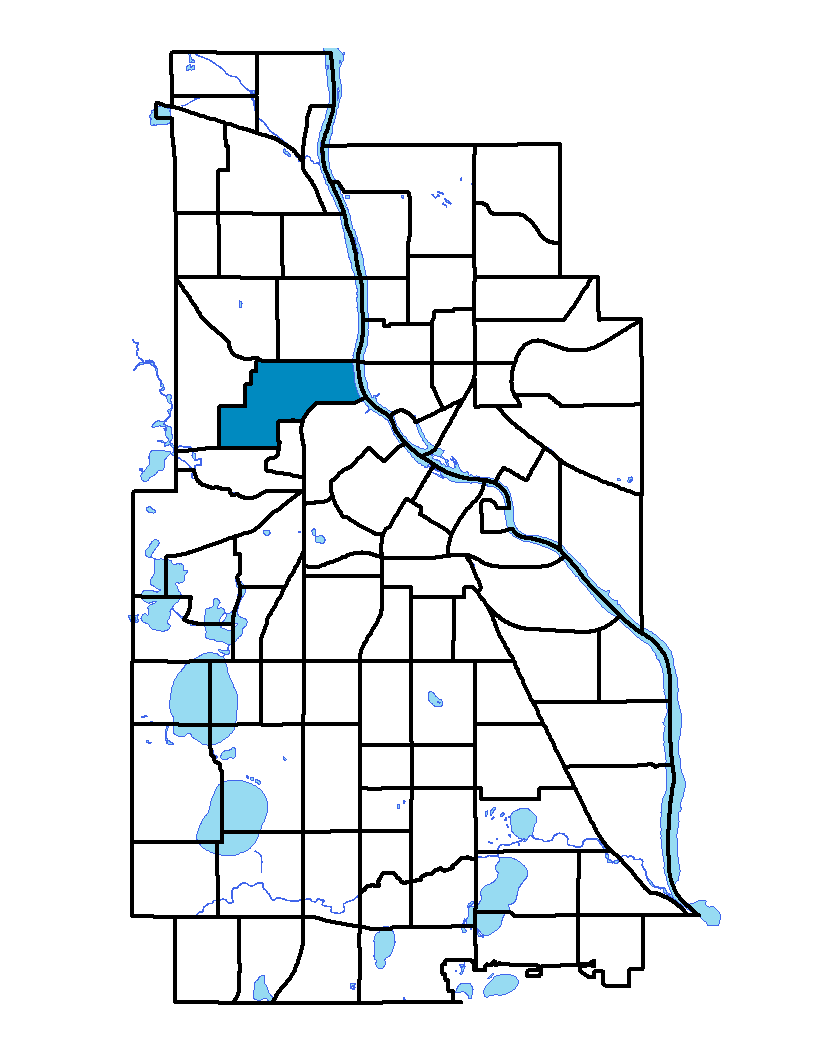The Near North neighborhood is located in the northwest portion of the City of Minneapolis and north of downtown, hence its name. It stretches from the Mississippi River on the east to Penn, Knox, James and Irving avenues on the west, and from West Broadway Avenue on the north to Olson Memorial Highway and 11th Avenue North on the south. Sumner Community Library has been a significant architectural and cultural landmark since it first opened to the public Dec. 16, 1915. A Carnegie library, the Tudor Revival-style building has historic designation nationally and locally – on the National Register of Historic Places and with the Minneapolis Heritage Preservation Commission. The library was named after Charles Sumner, a U.S. senator from Massachusetts and an outspoken abolitionist. In January 2005 the library celebrated a grand reopening after a two-year renovation project.
To learn more about the neighborhood association visit: www.nrrc.org
Indicator Details
|
Indicators |
Primary Domain | Indicator Value | Rank | Tier |
|---|---|---|---|---|
| Access to Mainstream Financial Services | Economic Health | 49.8% | 81 | Bottom |
| Access to Parks and Open Space | Natural Areas | 3.0% | 62 | Bottom |
| Adult Educational Attainment | Educational Opportunities | 72.7% | 78 | Bottom |
| Age of Housing | Housing | 64.6% | 12 | Top |
| Blood Lead Levels in Children | Housing | 5.8% | 58 | Middle |
| Business Retention | Economic Health | -2.2% | 76 | Bottom |
| Chronic School Absence | Health Systems and Public Safety | -% | - | Data N/A |
| Commute Mode Share | Transportation | 37.3% | 23 | Top |
| Employment Rate | Employment Opportunities | 46.9% | 80 | Bottom |
| Excessive Housing Cost Burden | Housing | 46.0% | 78 | Bottom |
| Food Desert | Neighborhood Characteristics | 66.7% | 27 | Top |
| High School Graduation Rate | Educational Opportunities | 39.0% | 6 | Top |
| Household Transportation Costs | Transportation | 16.2% | 34 | Middle |
| Local Business Vitality | Economic Health | 45.1% | 72 | Bottom |
| Long-Term Unemployment | Employment Opportunities | 14.1% | 86 | Bottom |
| Low Birth Weight | Health Systems and Public Safety | 10.1% | 60 | Bottom |
| Motor Vehicle Collisions | Health Systems and Public Safety | 144.2 | 85 | Bottom |
| Offsite Alcohol Outlets | Neighborhood Characteristics | 1.7 | 55 | Middle |
| Pedestrian Connectivity | Transportation | 111.7 | 59 | Bottom |
| Preschool Enrollment | Educational Opportunities | 23.8% | 75 | Bottom |
| Preventable Hospitalizations | Health Systems and Public Safety | 14.5 | 80 | Bottom |
| Proximity to Brownfield Sites | Environmental Hazards | 19.3% | 70 | Bottom |
| Proximity to Superfund Sites | Environmental Hazards | 49.6% | 62 | Bottom |
| Public Assisted Households | Employment Opportunities | 78.1% | 83 | Bottom |
| Reading Proficiency | Educational Opportunities | 18.7% | 23 | Top |
| Residential Mobility | Social Cohesion | 74.6% | 58 | Middle |
| Residential Proximity to Traffic | Environmental Hazards | 11.8% | 47 | Middle |
| School Proximity to Traffic | Environmental Hazards | 0.0% | 1 | Top |
| School Readiness Scores | Educational Opportunities | -% | - | Data N/A |
| Toxic Releases from Facilities | Environmental Hazards | 31.1% | 57 | Middle |
| Transit Accessibility | Transportation | 514.9 | 12 | Top |
| Travel Time to Work | Employment Opportunities | 23.3 minutes | 60 | Bottom |
| Tree Cover | Natural Areas | 26.1% | 65 | Bottom |
| Vacancy Rates | Housing | 11.8% | 68 | Bottom |
| Violent Crime | Health Systems and Public Safety | 115.3 | 79 | Bottom |
| Voter Participation | Social Cohesion | 20.2% | 58 | Middle |
| Walkability | Neighborhood Characteristics | 61 | 49 | Middle |

